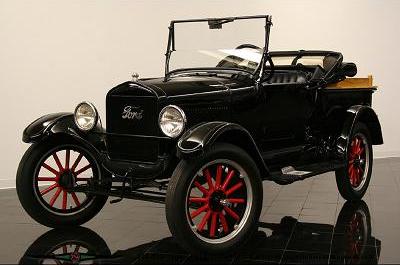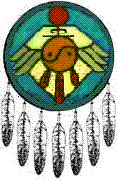|
Do You Remember??
Do you remember the rhymes of the Burma-Shave signs from long ago? I surely do! We kids and parents alike would look forward to reading the little rhymes, posted on consecutive posts along America's highways. I know Mom and Dad enjoyed them. One of us would announce, "I think I see some Burma-Shave signs!" Then for a few moments, a truce was called in the war of which kid was taking up more than his allotted space on the back seat of the family Ford, as we read them out loud together as we passed them by.
 The signs were addicting. Like someone once said, "No one could read just one." We had to read the entire verse, and we knew that the final sign would read, "Burma-Shave". Nearly everyone who drove on America's highways from the 1930's to the 1960's knows of the signs. Or as one of the poems said, IF YOU DON'T KNOW We took the Burma-Shave entertainment for granted. Do you know how these clever signs happened to be placed along the road? His company near bankruptcy, Clinton Odell had developed a brushless shaving cream which he called Burma-Shave. At a time when folks were really starting to travel America by automobile, the brushless shave cream eliminated the problem of packing a wet shaving brush and cup. Odell had an excellent product; all he lacked was a marketing plan. What was about to happen, is one of America's most successful advertising plans ever! Allan Odell, one of three sons, convinced his father to spend $200 for some materials to construct highway signs. In 1926, using recycled lumber, Allan fabricated the first Burma-Shave verses, and erected one set of signs along Route 35, between Albert Lea and Minneapolis, Minnesota. Within weeks, drug stores began running out of Burma-Shave, and ordering more. The next year, Allan and his brother Leonard set up more signs, spreading across Minnesota and into Wisconsin, spending $25,000 that year on signs. Orders poured in, and sales for the year hit $68,000. Although Allan wrote many of the early jingles himself, what made the sign campaign so successful is that ordinary folks were encouraged to write the jingles, and were awarded cash prizes up to $100. The family rejected any jingles which were even the slightest bit offensive. During WW II, homesick GI's would erect Burma-Shave lookalike signs in Alaska, Germany, and even Antarctica! Eventually, about 7,000 sets of verses were posted along highways in 45 states. A sign crew with just 8 trucks maintained all the signs. The road men calling themselves "PHD's" (Post-Hole Diggers) changed the verses at least once a year and replaced any broken signs. Most farmers were more than willing to allow the signs to be erected on their land, for little more than a case of the product each year. The little Burma-Shave company grew to $3 million in annual sales. All good things come to an end. The Odell Family sold their company to Gillette, which in turn became part of American Safety Razor, and Phillip Morris. The huge conglomerate decided the verses were a silly idea, and that other types of advertising, especially television, would sell more product. By 1966, every last sign disappeared from America's highways. A very few ended up in museums. Clinton Odell, founder of the company, died in 1958. Allan Odell, who came up with the sign idea, passed away in 1994, and his brother Leonard in 1991. The first Burma-Shave signs appeared in 1927 and new ones continued to come out until 1963, when the country was and would continue undergoing a lot of change in its culture and attitudes. The thoughtfulness that went into each Burma-Shave jingle is remarkable. Burma-Shave signage certainly had the greeting card industry beaten, though conveying a four stanza Burma salutation for a wedding or funeral is probably inappropriate. See if you don't recognize trends in the signs influenced by their decade of introduction. For example, the earliest signs seem to have more of a rural tone, while the war years were, well, the war years. The 50s saw more emphasis on driving and less on shaving, two of the three behaviors around which the signs existed - the third of course being romance! The Burma-Shave signs of the Era - Click the links.
1927,
1928,
1929,
1930,
1931,
1932,
1933,
1934,
1935,
1936,
1937,
1938,
1939,
1940,
1941,
1942,
1943,
1945,
1947,
1948,
1949,
1950,
1951,
1952,
1953,
1955,
1959,
1960,
1963
Some I remember
For those who never saw any of the Burma Shave signs, here is a quick lesson in our history of the late 1920's until the early '60's. Before there were interstates, when everyone drove the old 2 lane roads, Burma Shave signs would be posted all over the countryside in farmers' fields. They were small red signs with white letters. Five signs, about 100 feet apart, each containing 1 line of a 4 line couplet...... and the obligatory 5th sign advertising Burma-Shave shaving cream.
Do these bring back any old memories? Love and Peace, Barefoot
[This History of the Signs composited from a number of sources on the Web]
Created November 2008 in the Spirit of Love Two mighty important things, Pardn'r, LOVE And PEACE
| ||||||||||||||

